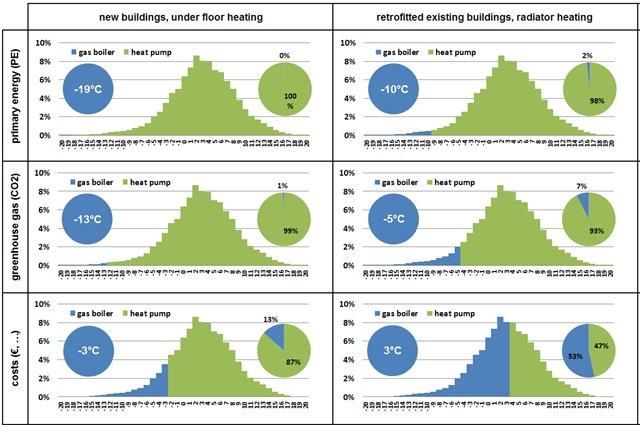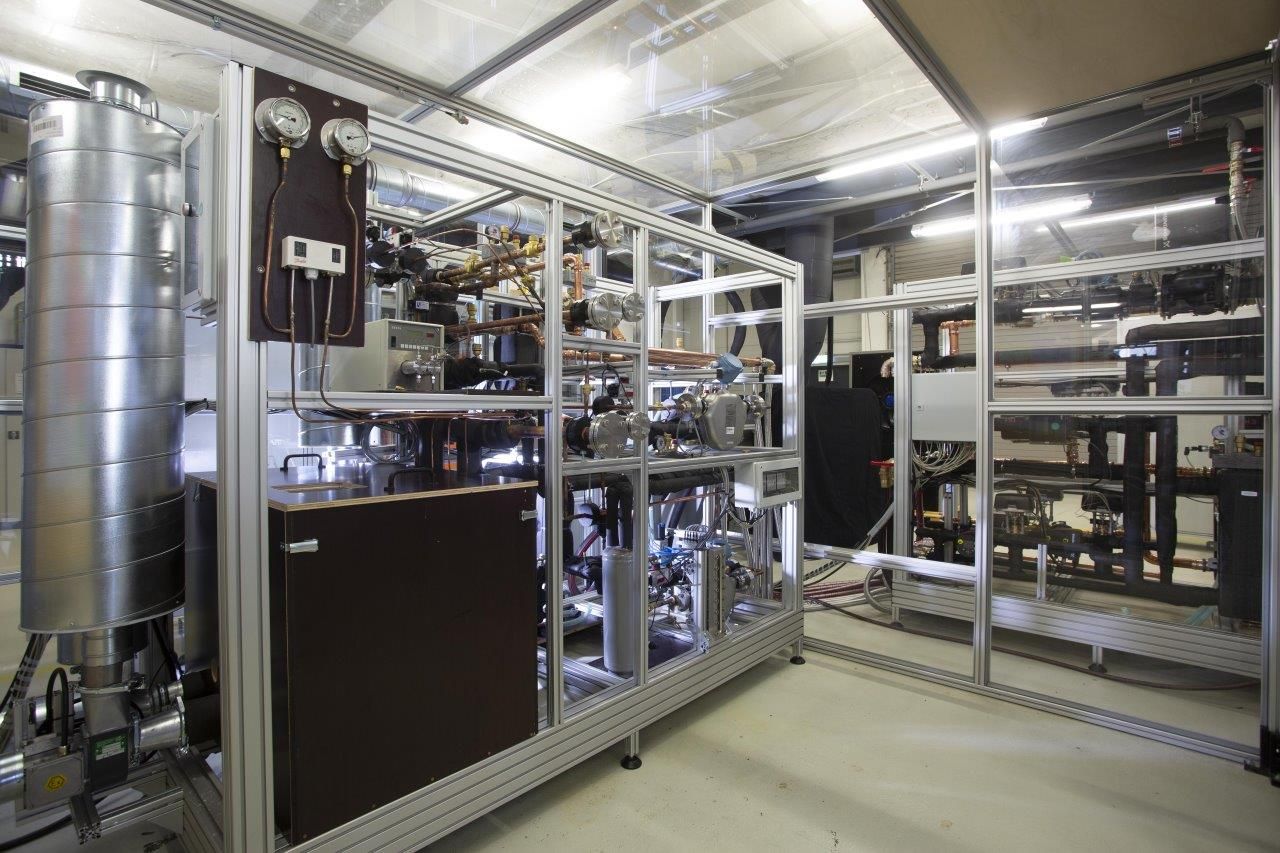| Duration: | 01/2016 - 11/2021 |
| Contracting Authority/ Sponsors: |
Bundesministerium für Wirtschaft und Energie (BMWi), Projektträger Jülich |
| Project Partners: | Bosch Thermotechnik GmbH, Robert Bosch GmbH |
| Project Focus: |
LowEx-Bestand-HTWP Cooperative project on – LowEx concepts for the heat supply of retrofitted existing multi-family buildings
(LowEx Bestand) - "Development of heat pump solutions for existing multi-family buildings Bosch/Fraunhofer ISE"


The building sector plays a significant role in Germany's energy consumption, and thus the decarbonization of the heat supply is a central means of achieving the German government's climate protection goals. Heat pumps have considerable potential in this regard.
Two development tracks are being pursued in this cooperative project: Firstly, dimensioning and operating strategies for bivalent systems consisting of an electric heat pump and a gas boiler are being developed and implemented. Here the different hydraulic integration schemes for space heating and domestic hot water heating as well as various optimization goals (carbon emissions, investment costs, etc.) are considered.
Secondly, a heat pump with low refrigerant charge and a natural refrigerant is being developed.
The multi-family building sector represents a challenging market for electric heat pumps: high heating demand combined with the use of radiators require higher temperatures in the heating circuit. High temperatures also ensure a hygienic hot water supply. Densely populated urban areas make it difficult to access the environmental heat source. In this joint project between Bosch Thermotechnik GmbH, Robert Bosch GmbH and Fraunhofer ISE, two heat pump solutions are being developed for implementation in the building energy retrofits.
A promising solution for the integration of ambient heat are bivalent (hybrid) systems. The systems examined consist of an electric heat pump in combination with a fossil fuel-based boiler. The operating strategy is governed by a superordinate control system which takes into account the different systems. The fossil-fuel heat generator is usually operated below a defined outside air temperature (bivalence point) while the heat pump is operated above this bivalence point. This ensures that the entire system can provide the necessary heat up to the design set point, without having to size the heat pump (and thus the ambient heat source) for maximum output. In addition, a control system of this type can enable the heat pump to always operate with sufficiently high efficiency. The objectives of this track is to develop and implement dimensioning and operation strategies for bivalent systems for the multi-family building stock under consideration of:
· different hydraulic integration schemes for space heating and domestic hot water heating
· different optimization targets (primary energy, CO2, etc.)
· grid supportive services
· building and heat transfer systems
To meet the reductions in fluorinated greenhouse gas (F-gases) emissions as set down in the F-Gas Regulation (EU Regulation No. 517/2014), a heat pump suitable for multi-family homes and based on natural, flammable refrigerants is being developed in a second track in this project. In order to minimize its hazard potential, the refrigerant circuit is designed for a minimum refrigeration charge by implementing novel evaporator concepts among other measures. Correspondingly a safety concept is also being developed. In order to adhere to the strict regulations on noise emissions in densely built urban areas, the latest findings in psychoacoustics are incorporated into the development.